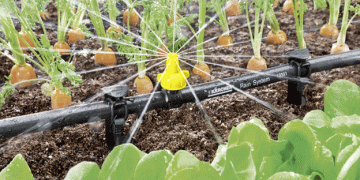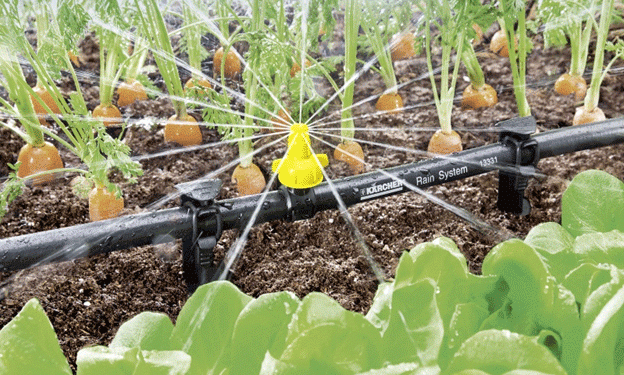As water scarcity becomes a pressing issue for farmers worldwide, innovative irrigation techniques are gaining prominence. One such technique, drip irrigation, is proving to be a game-changer for farmers looking to optimize water use and improve crop yields. This article delves into the benefits of drip irrigation, supported by the latest data and trends in agricultural water management.
The Growing Importance of Drip Irrigation
Drip irrigation, also known as trickle irrigation, is a method where water is delivered directly to the plant roots through a network of pipes, tubing, and emitters. This technique contrasts with traditional overhead sprinkler systems, which often lead to significant water loss due to evaporation and runoff.
1. Water Conservation Benefits
Drip irrigation systems are known for their water efficiency. According to the International Water Management Institute (IWMI), drip irrigation systems can reduce water use by up to 60% compared to conventional sprinkler systems. This is achieved through precise water delivery, which minimizes evaporation and runoff. In a study published in Agricultural Water Management, researchers found that drip irrigation could reduce water usage by 30-70% while increasing crop yields by 20-50%.
In Turkey, the Erzincan Provincial Agriculture Directorate has emphasized the importance of adopting drip irrigation to address the rapid depletion of water resources. Their findings align with global trends, which highlight that drip irrigation not only conserves water but also contributes to more sustainable agricultural practices.
2. Increased Crop Yields
The benefits of drip irrigation extend beyond water savings. Drip irrigation can significantly boost crop yields. The University of California’s Division of Agriculture and Natural Resources reports that drip irrigation can increase crop yields by up to 40% compared to traditional methods. This is due to the efficient water delivery system that ensures plants receive a consistent and optimal amount of water.
In regions affected by drought, such as parts of Turkey and California, farmers have reported up to a 50% increase in crop yields with the adoption of drip irrigation systems. Additionally, the Journal of Irrigation and Drainage Engineering highlights that drip irrigation systems can improve crop quality and reduce the incidence of diseases and pests, further enhancing productivity.
3. Soil Health and Structure
Drip irrigation not only benefits crop yields but also helps maintain soil health. Unlike sprinkler systems, which can lead to soil erosion and nutrient leaching, drip irrigation delivers water directly to the plant roots, reducing soil erosion and nutrient runoff. The Soil Science Society of America Journal states that drip irrigation systems can improve soil structure, increase soil moisture levels, and reduce the salinization of soils.
The Erzincan Provincial Agriculture Directorate notes that drip irrigation systems help maintain soil structure and fertility, which are crucial for long-term agricultural productivity. By delivering water directly to the root zone, drip irrigation prevents water from pooling on the soil surface, thereby reducing the risk of soil erosion and maintaining soil health.
4. Training and Best Practices
Effective implementation of drip irrigation systems requires proper training and education. The American Society of Agricultural and Biological Engineers emphasizes that farmers must be educated on the selection, installation, and maintenance of drip irrigation systems to achieve the best results.
In Turkey, agricultural authorities are focusing on educating farmers about the correct use of drip irrigation systems. This includes understanding the different types of drip irrigation systems, the importance of regular maintenance, and the application of best practices for different types of crops.
5. Future Outlook and Technological Advancements
The future of irrigation technology looks promising with ongoing advancements in drip irrigation systems. New technologies are emerging, such as smart irrigation systems that use sensors and data analytics to optimize water use. According to a report by Global Irrigation Insights, the adoption of smart drip irrigation systems is expected to grow at a CAGR of 12.5% over the next five years.
These advancements will likely make drip irrigation systems even more efficient and cost-effective, helping farmers manage water resources more effectively and respond to the challenges of climate change.
Drip irrigation systems offer a range of benefits that make them an essential tool for modern agriculture. By conserving water, increasing crop yields, and maintaining soil health, drip irrigation systems represent a sustainable solution for addressing water scarcity and improving agricultural productivity. As technology advances and more farmers adopt these systems, the potential for widespread positive impact on global agriculture continues to grow.































